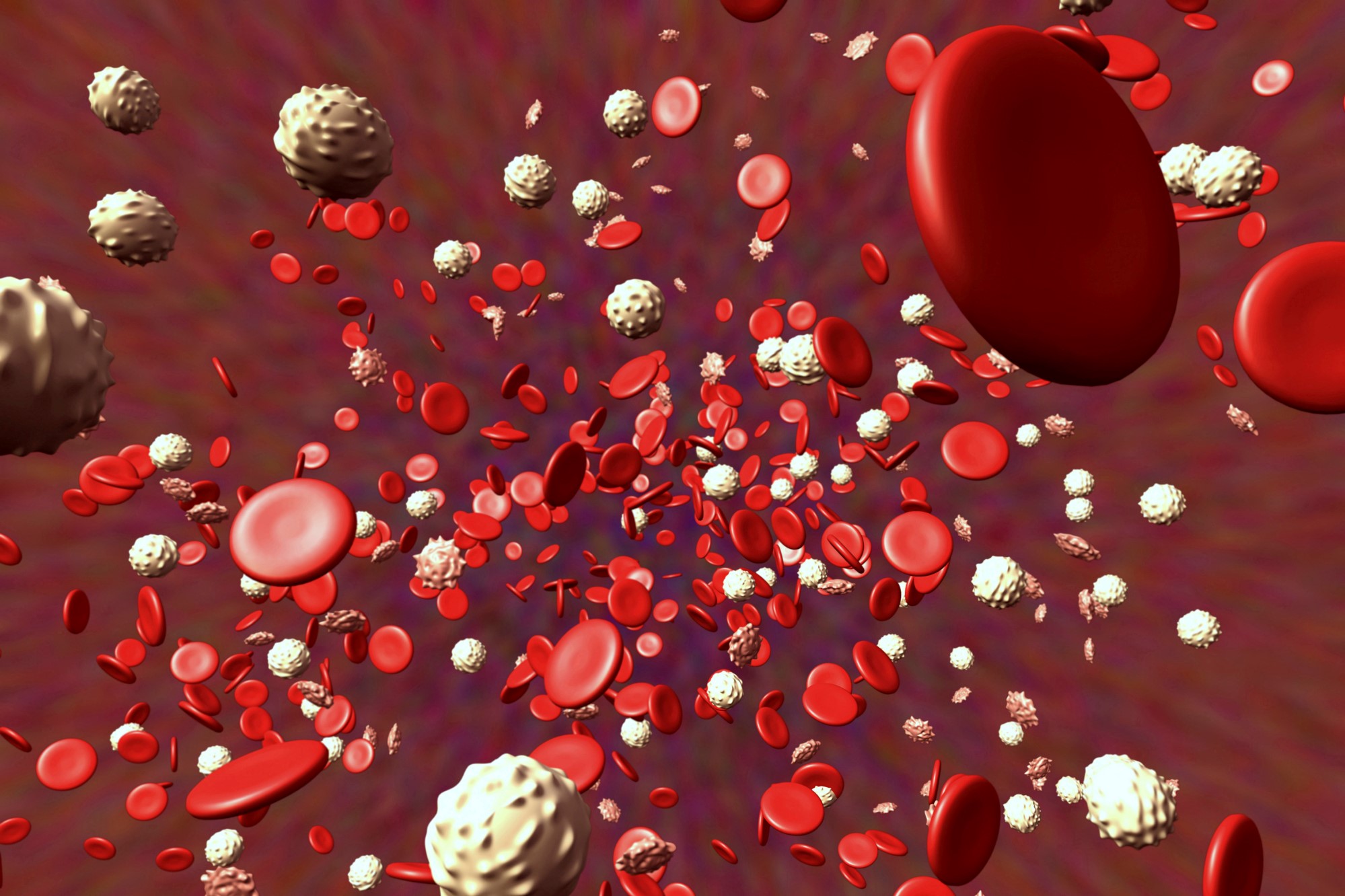
Blood diseases: Polycythaemia vera, or Vaquez disease
Polycythaemia vera (also known as Vaquez disease) is a chronic proliferative blood disorder characterised by a progressive increase in red blood cells and caused by an impaired functioning of the haemopoietic stem cells in the bone marrow
Increased red blood cells and Polycythaemia Vera
The cells that make up the blood are
- red blood cells
- white blood cells
- platelets.
In polycythaemics, the haemopoietic cells produce an excessive amount of all three cell lines, causing the blood to become more viscous (hence the name polycythaemia, ‘more blood cells’).
Epidemiology of Polycythaemia vera
The disease affects men more frequently than women, typically in the 40-80 age group, although it can also occur in younger individuals.
It progresses very slowly, which is why patients often do not experience any symptoms for many years.
Symptoms and effects of Polycythaemia Vera
People with polycythaemia vera are subject to an increased risk of both arterial (stroke or heart attack) and venous thrombosis.
Some patients are prone to bleeding caused by the platelet abnormalities inherent in the disease, but the main cause of death is thrombosis.
The aim of therapy, whether by periodic bloodletting or administration of chemotherapy, is to reduce the high blood viscosity and prevent thrombosis.
The parameters for assessing the risk of thrombosis are age, any previous thrombotic events, and smoking; today, on the basis of data from a multicentre study coordinated by Professor Raffaele Landolfi, Professor of Internal Medicine at the Catholic University of Rome, and published in November in ‘Blood’, white blood cells are also carefully assessed.
Polycythaemia and heart attack
The number of white blood cells does indeed seem to influence the risk of heart attack in polycythaemics; this correlation can also be demonstrated in the general population, but in a much larger sample.
The reason for this difference seems to lie in the fact that the range of white blood cell concentrations in polycythaemics is much wider (from 6 to 30,000 white blood cells per micro litre) than in the non-polycythaemic population (where it is rarely greater than 9,000 per micro litre).
The study conducted by Prof. Landolfi’s team opens a window to a possible new therapeutic strategy to reduce the risk of heart attack: reducing the number of white blood cells.
For example, through the use of hydroxycarbamide, a principle that reduces cell proliferation and thus the production of blood cells already used in this pathology, especially in older subjects.
As some cardiologists also suggest, there should be more interest in the number of white blood cells and the effect of therapies capable of reducing their number even in the general population at high risk of heart attack.
This important research adds to the results of the ECLAP study (European Collaboration of Low Dose Aspirin in Polycythemia Vera) coordinated by Prof. Landolfi and published in January 2004 in the New England Journal of Medicine.
According to this multicentre randomised double-blind study conducted in 12 European countries, which enrolled 518 subjects with a follow-up of three years, aspirin administered at low doses significantly reduces the risk of thrombosis in patients with polycythemia vera.
These results indicate a high benefit/risk ratio of aspirin use in patients with polycythaemia vera, demonstrating that its use has no contraindication when combined with other disease-specific therapies.
In polycythaemic patients already treated with standard cytoreductive therapy (the aim of this therapy is to lower the red blood cell count), the addition of low doses of aspirin (100 mg per day) significantly reduces (by more than 50%) the risk of major cardiovascular diseases (fatal and non-fatal heart attack, stroke, venous thrombosis and pulmonary embolism).
Read Also:
Emergency Live Even More…Live: Download The New Free App Of Your Newspaper For IOS And Android
What Is Amylase And Why Is The Test Performed To Measure The Amount Of Amylase In The Blood?
Adverse Drug Reactions: What They Are And How To Manage Adverse Effects
Kidney Stones: How They Form And How To Avoid Them
Renal Colic, How Does It Manifest Itself?
Biliary Colic: How To Recognise And Treat It
When The Patient Complains Of Pain In The Right Or Left Hip: Here Are The Related Pathologies
Creatinine, Detection In Blood And Urine Indicates Kidney Function
Leukaemia In Children With Down Syndrome: What You Need To Know
Pediatric White Blood Cell Disorders
What Is Albumin And Why Is The Test Performed To Quantify Blood Albumin Values?
What Is Cholesterol And Why Is It Tested To Quantify The Level Of (Total) Cholesterol In The Blood?
Thrombophilia: Causes And Treatment Of Excessive Blood Clotting Tendency


